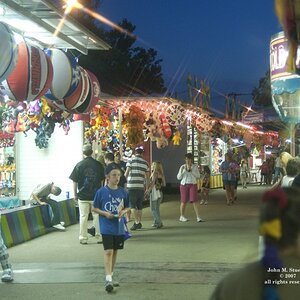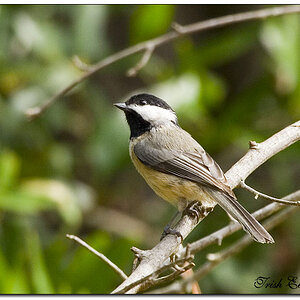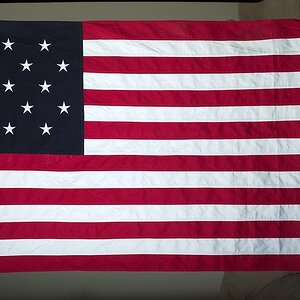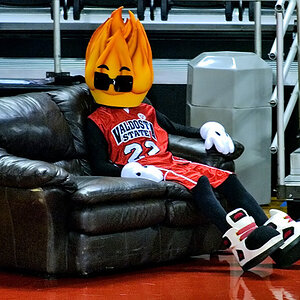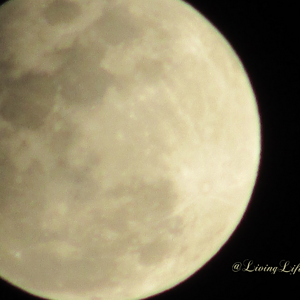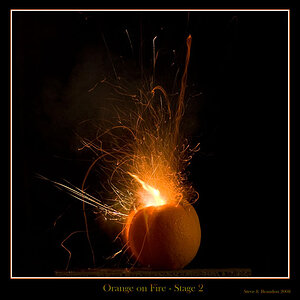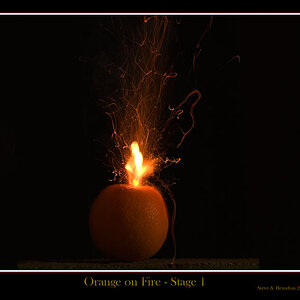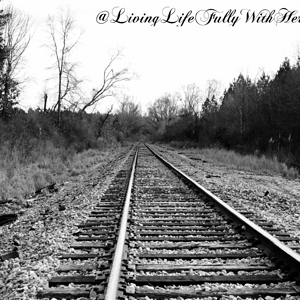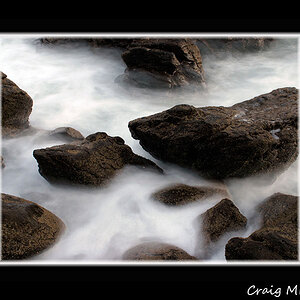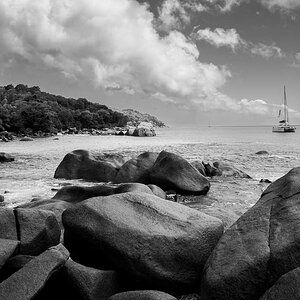Navigation
Install the app
How to install the app on iOS
Follow along with the video below to see how to install our site as a web app on your home screen.

Note: This feature currently requires accessing the site using the built-in Safari browser.
More options
You are using an out of date browser. It may not display this or other websites correctly.
You should upgrade or use an alternative browser.
You should upgrade or use an alternative browser.
Shooting under fluorescent lights
- Thread starter photo_rev
- Start date
Cortian
No longer a newbie, moving up!
- Joined
- Jan 1, 2018
- Messages
- 503
- Reaction score
- 209
- Location
- S.E. Michigan, USA
- Can others edit my Photos
- Photos OK to edit
Would help to know what kind of camera you have. Members will be able to offer better suggestions, if so.
For example: My first digicam, an Olympus C-4000Z, had a very capable custom white balance facility, as does my new-to-me Canon 20D. Whereas all I can do with my Olympus Stylus Tough 6000 is set the WB to "fluorescent," which may or may not get it right.
My cell phone doesn't appear to have any WB settings at all.
In an office environment it may be even trickier. They probably don't take a lot of care to match colour temperature with replacement bulbs; then there's desktop lamps, which may have varying types of incandescent, halogen or LED bulbs, and daylight through windows.
I ran into that problem at a museum, recently. One room had fluorescent, incandescent and halogen lights, as well as daylight. (I just gave up and set the camera to auto WB.)
For example: My first digicam, an Olympus C-4000Z, had a very capable custom white balance facility, as does my new-to-me Canon 20D. Whereas all I can do with my Olympus Stylus Tough 6000 is set the WB to "fluorescent," which may or may not get it right.
My cell phone doesn't appear to have any WB settings at all.
In an office environment it may be even trickier. They probably don't take a lot of care to match colour temperature with replacement bulbs; then there's desktop lamps, which may have varying types of incandescent, halogen or LED bulbs, and daylight through windows.
I ran into that problem at a museum, recently. One room had fluorescent, incandescent and halogen lights, as well as daylight. (I just gave up and set the camera to auto WB.)
Last edited:
- Joined
- Aug 15, 2013
- Messages
- 13,695
- Reaction score
- 3,369
- Location
- SE Michigan
- Can others edit my Photos
- Photos OK to edit
additionally flourescent bulbs may flicker.
You may not see this but the camera's sensor does. During the flourescent lights cycle the color temperature and light intensity changes. Some cameras can handle this much better than others.
If you add your own speedlight/strobe flash that'll take care of most of the problem. Or shoot in Raw and handle it in post processing. Though if you have multiple different types of light sources you'll encounter various problems with White Balance.
You may not see this but the camera's sensor does. During the flourescent lights cycle the color temperature and light intensity changes. Some cameras can handle this much better than others.
If you add your own speedlight/strobe flash that'll take care of most of the problem. Or shoot in Raw and handle it in post processing. Though if you have multiple different types of light sources you'll encounter various problems with White Balance.
JamesD
Between darkrooms
- Joined
- Mar 20, 2005
- Messages
- 1,053
- Reaction score
- 43
- Location
- Living in Snapshot reality.
- Can others edit my Photos
- Photos NOT OK to edit
additionally flourescent bulbs may flicker.
Adding to this...
Traditional advice is to set the shutter speed at 1/60 sec. or slower (1/50 sec. or slower in countries with 50Hz mains frequency) to eliminate any flicker that may show up under fluorescent lights (typically forms dark bands in the image).
Incandescent and halogen lights won't have this flicker problem. LED bulbs may or may not; it depends on the engineering of the bulb. At worst, the same rule (1/60 or slower) would apply.
Designer
Been spending a lot of time on here!
- Joined
- Apr 13, 2012
- Messages
- 18,505
- Reaction score
- 4,853
- Location
- Iowa
- Can others edit my Photos
- Photos OK to edit
Without knowing more about your camera or the lighting, I cannot say what you should do, so I will simply say what I would do.I take a lot of pictures in an office setting, where the fluorescent lighting makes everything look terrible. What are some ways I can counter this effect?
First, look around and evaluate the existing lighting. If it's all fluorescent, and nothing else, your job just got easier. If there is a mix of fluorescent, incandescent, LED, and window light, then you're basically in trouble.
Let's go with all fluorescent to make it simple.
I would set my camera's white balance to fluorescent, and if I was supplementing with flash, (I probably would) I would put a green filter on my flash. This makes all the light the same color, and the camera, having been forewarned that we're under fluorescent lighting, will compensate in the JPEG images. Of course, I would make sure my camera was capturing the Raw files for more critical editing purposes.
If the JPEG images don't look quite right, then you can usually pull out the correct colors from the Raw file. If you don't have particularly good color memory, it will help to get something from the office to match the color.
bratkinson
No longer a newbie, moving up!
- Joined
- Dec 4, 2011
- Messages
- 1,643
- Reaction score
- 318
- Location
- Western MA
- Can others edit my Photos
- Photos OK to edit
I'm ready to replace all the florescent bulbs in the world! They cause me nothing but nightmares!
One of my more frequent indoor event venues is a combination of florescent, incandescent, and floor to ceiling windows along one side. No matter what camera WB setting/WB card/Color Checker I use, it is a complete waste of time! It all has to be corrected in post processing, in my opinion. Yes, using a flash to 'override' the florescents will solve the problem. But then you're dealing with overexposed faces and light dropoff issues inherent with flash.
When photographing people, trying to 'freeze action' on them using a shutter speed of 1/60th will result in a number of blurred faces/hands/etc. At that speed, my experience has been about half or more come out blurred. So, I try to shoot at 1/125th and faster to 'freeze' them. But at the higher speeds, the 60 cycles/second of the florescents causes colors to come out that have radically different color tints in every frame. Even taking shots as fast possible without moving the camera causes every frame to have different WB. Of course, as subjects move around and hence under different lighting combinations, the color shifts worsen further.
So, I fix the problem in Lightroom using the WB 'eyedropper' tool. I find anything that is fairly white and click on that. Shirts and shirt collars are my usual targets, but papers, even sheet music will do. Then I'll use the WB sliders to get things closer to what I want. Sometimes, it will also be necessary to use individual color adjustments (hue/saturation/luminence) to get what I want. Then start over again on the next photo. If there's several photos in a series, I'll go back and adjust some more to get them all to the same appearance, otherwise, the viewer would see minor color shifts from frame to frame.
Yes, I'm just a 'hacker'. Sometimes, after spending maybe 20 minutes trying to get the best WB across a small series of images, I'll end up just making them as best I can and be done with it. Then this year, at a school Christmas concert I've shot for several years, they put in new LED lighting across the front of the stage, and still had the old incandescents lighting the rear half of the stage. Without extensive work on each photo using Photoshop Elements to separate the images into layers and processing each individually, the only choice is to make the kids in the front or performing solos or in a skit WB colors accurate, and let the kids in the rear have a 'bluish-purple' caste to them.
One of my more frequent indoor event venues is a combination of florescent, incandescent, and floor to ceiling windows along one side. No matter what camera WB setting/WB card/Color Checker I use, it is a complete waste of time! It all has to be corrected in post processing, in my opinion. Yes, using a flash to 'override' the florescents will solve the problem. But then you're dealing with overexposed faces and light dropoff issues inherent with flash.
When photographing people, trying to 'freeze action' on them using a shutter speed of 1/60th will result in a number of blurred faces/hands/etc. At that speed, my experience has been about half or more come out blurred. So, I try to shoot at 1/125th and faster to 'freeze' them. But at the higher speeds, the 60 cycles/second of the florescents causes colors to come out that have radically different color tints in every frame. Even taking shots as fast possible without moving the camera causes every frame to have different WB. Of course, as subjects move around and hence under different lighting combinations, the color shifts worsen further.
So, I fix the problem in Lightroom using the WB 'eyedropper' tool. I find anything that is fairly white and click on that. Shirts and shirt collars are my usual targets, but papers, even sheet music will do. Then I'll use the WB sliders to get things closer to what I want. Sometimes, it will also be necessary to use individual color adjustments (hue/saturation/luminence) to get what I want. Then start over again on the next photo. If there's several photos in a series, I'll go back and adjust some more to get them all to the same appearance, otherwise, the viewer would see minor color shifts from frame to frame.
Yes, I'm just a 'hacker'. Sometimes, after spending maybe 20 minutes trying to get the best WB across a small series of images, I'll end up just making them as best I can and be done with it. Then this year, at a school Christmas concert I've shot for several years, they put in new LED lighting across the front of the stage, and still had the old incandescents lighting the rear half of the stage. Without extensive work on each photo using Photoshop Elements to separate the images into layers and processing each individually, the only choice is to make the kids in the front or performing solos or in a skit WB colors accurate, and let the kids in the rear have a 'bluish-purple' caste to them.
Last edited:
Designer
Been spending a lot of time on here!
- Joined
- Apr 13, 2012
- Messages
- 18,505
- Reaction score
- 4,853
- Location
- Iowa
- Can others edit my Photos
- Photos OK to edit
Oh well, your flash is faster than that anyway, so no biggie.
Shutter for ambient, flash for freezing movement, aperture to accommodate the flash. It's all good.
Shutter for ambient, flash for freezing movement, aperture to accommodate the flash. It's all good.
dennybeall
No longer a newbie, moving up!
- Joined
- May 13, 2014
- Messages
- 2,308
- Reaction score
- 441
- Location
- OTOW - Ocala, Florida
- Website
- www.citrusphotorestore.com
- Can others edit my Photos
- Photos OK to edit
I I have time I'll set the cameras white balance, if no time, or I forget, then fix it in Photoshop (ACR)
RayDalio
TPF Noob!
- Joined
- Feb 28, 2018
- Messages
- 9
- Reaction score
- 3
- Can others edit my Photos
- Photos OK to edit
Watch Chungking Express. Christopher Doyle makes shooting under a variety of lights, including fluorescent, an art form.
I'd say get a cheap, small LED light panel if you're shooting subjects, and either prop it on a shelf or clip it on the camera. White balance for the LED light, and let the fluorescent light go to a blue/green cool tone.
I'd say get a cheap, small LED light panel if you're shooting subjects, and either prop it on a shelf or clip it on the camera. White balance for the LED light, and let the fluorescent light go to a blue/green cool tone.
TCampbell
Been spending a lot of time on here!
- Joined
- Mar 31, 2012
- Messages
- 3,614
- Reaction score
- 1,556
- Location
- Dearborn, MI
- Can others edit my Photos
- Photos OK to edit
My latest camera (Canon 5D IV) has “flicker” detection ... it can detect that the light is flickering at common power company rates... and it literally times the shot so that it catches the shot at the right moment. But most cameras don’t do this and there’s no reasonable way to handle it manually (aside from bringing your own lighting gear). You literally just have to check your shots.
Color cast can be corrected with white balance.
Color cast can be corrected with white balance.
RayDalio
TPF Noob!
- Joined
- Feb 28, 2018
- Messages
- 9
- Reaction score
- 3
- Can others edit my Photos
- Photos OK to edit
Of course one of the reasons fluorescent can look particularly drab is that it's usually got a very narrow spectral distribution:

So it you find skin tones, walls, shirts, etc. all seem to blend into the same murky tone, it's no wonder. There's just not the color information to separate them. Which is why even a little fill flash often elevates images.

So it you find skin tones, walls, shirts, etc. all seem to blend into the same murky tone, it's no wonder. There's just not the color information to separate them. Which is why even a little fill flash often elevates images.
espresso2x
No longer a newbie, moving up!
- Joined
- Feb 3, 2018
- Messages
- 259
- Reaction score
- 420
- Can others edit my Photos
- Photos NOT OK to edit
You can gel your flash. I have a #96 lime Rosco gel on one of mine. I use a custom wb with an opaque white cup over the lens to get a closer startpoint, and the image can be adjusted in a raw developer. An Fl-Day filter can be useful.
I take a lot of pictures in an office setting, where the fluorescent lighting makes everything look terrible. What are some ways I can counter this effect?
- Joined
- Nov 15, 2017
- Messages
- 1,614
- Reaction score
- 2,247
- Location
- Washington D.C. Area
- Website
- mikeatherton.com
- Can others edit my Photos
- Photos OK to edit
My latest camera (Canon 5D IV) has “flicker” detection ... it can detect that the light is flickering at common power company rates... and it literally times the shot so that it catches the shot at the right moment. But most cameras don’t do this and there’s no reasonable way to handle it manually (aside from bringing your own lighting gear). You literally just have to check your shots.
Color cast can be corrected with white balance.
The 6D Mark II does too. It warns you that frames per second will be reduced and now I know why.
Similar threads
- Replies
- 8
- Views
- 558
- Replies
- 9
- Views
- 2K

